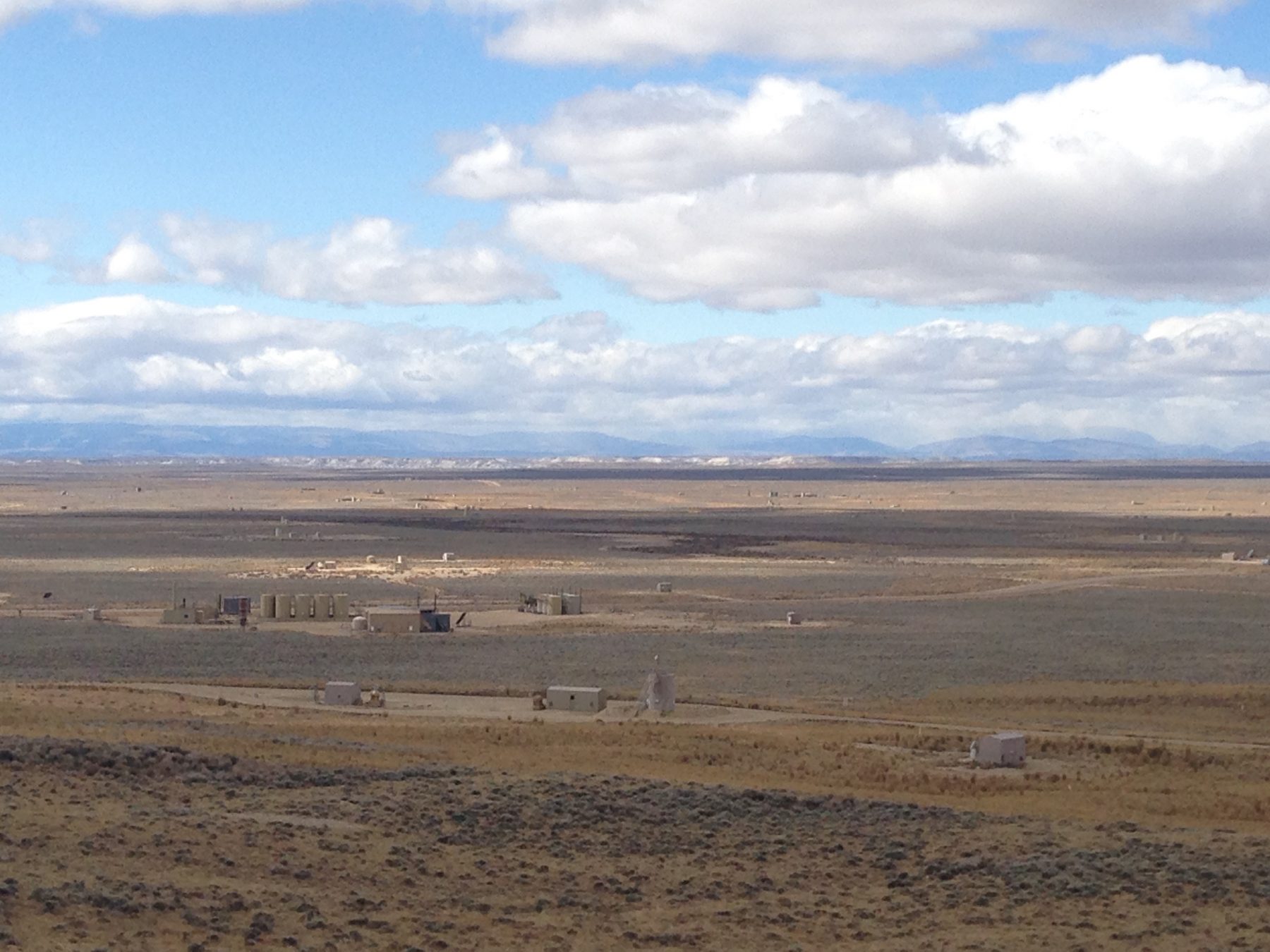The winter of 2019 was a bad season for ozone pollution in the Upper Green River Basin, particularly near Boulder where monitoring stations recorded nine days in which ozone levels exceeded federal standards.
Winter ozone is not new for this region, but increasing concentrations over the last several years have called into question whether the regulations governing fugitive emissions from oil and gas operations — and our clean air — need tightening. This was the context that led members of the local Pinedale advocacy group Citizens United for Responsible Energy Development and the Wyoming Outdoor Council to tour the Jonah and Pinedale Anticline natural gas fields with Wyoming’s Department of Environmental Quality. Our goal was to better understand current operations — and learn what state regulators are doing in response to last season’s unhealthy ozone conditions.
CURED member Jana Weber looks at the emissions from a combustor through a flare camera. These cameras can cost more than $100,000 and are used to quickly identify emission leaks.
As one might expect, there’s a lot to see in the state’s largest natural gas field. Our group visited facilities owned by the three major energy companies in the area: Pinedale Energy, Ultra Energy, and Jonah Energy. We examined lake tanks, pig launchers, combusters, disposal facilities, production units, and dehydrators with state-of-the-art flare cameras used to detect leaking emissions from a distance. Looking into these cameras is like looking under a microscope where the invisible world of gasses and heat is revealed in ghostly detail. Technological advances like this are essential for quickly identifying leaks and monitoring emissions and are a key component of what’s known as Leak Detection and Repair.
New technologies might make inspections easier and more efficient, but it remains a daunting task over such a large area. Currently, the Upper Green River Basin has more than 8,000 permitted facilities and only two full-time DEQ air quality inspectors. Even with each inspector performing hundreds of inspections annually, the vast majority of these facilities will go uninspected each year.
Fortunately, DEQ has ways of prioritizing the most important inspections based upon factors like the facility’s previous violations, its potential for emissions, and when it was last inspected. With low compliance rates a lingering concern and priority, it was also refreshing to learn that inspectors took enforcement actions against several operators this summer for permit violations.
Touring the Jonah and Pinedale Anticline fields was a reminder of the good work and intentions of our state’s Department of Environmental Quality in the Upper Green River Basin. But, while we were pleased with what we saw, the bar for whether or not current efforts are enough will be determined by the ozone levels we see in future winters. We’re encouraged that the DEQ seems to be taking last year’s violations seriously and has set ambitious goals for engine monitoring and working to bring on a third air quality inspector in the basin this winter. However, funding for the department’s two current full-time inspectors will need to be added to the DEQ’s budget next year, due to the elimination of the federal contribution for this work.
We have to make sure that DEQ has the resources it needs to prioritize inspections and improve compliance rates to achieve better air quality in the Upper Green. You can be sure that the Outdoor Council will be advocating for this at the 2020 legislative session in Cheyenne.
The DEQ’s annual pre-season ozone meeting is slated for November 18 at the Boulder Community Center in Boulder, WY. Outdoor Council staff and CURED members will be in attendance. More information can be found here.


